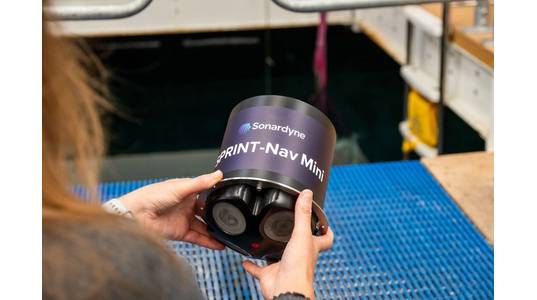
Marine technology company Sonardyne has launched what it described as "a range-topping model" of its hybrid, underwater, and surface vehicle navigation platform, SPRINT-Nav Mini.
According to Sonardyne, the new Navigator version extends the capability of the Guidance model introduced last year, by calculating and providing the position of a remote, autonomous, or piloted underwater vehicle, or uncrewed surface vessel, in addition to its velocity, depth, and attitude.
"Small in size and low in power, SPRINT-Nav Mini is engineered to provide accurate, precise, and robust guidance, and also survey and inspection capabilities, for vehicle platforms that would normally not be able to host high-end navigation systems. These include observation-class ROVs, low-logistic AUVs, manned submersibles, swimmer delivery vehicles, and USVs operating in shallow waters," Sonardyne said.
Sonardyne says that the Mini family combines an INS, AHRS, pressure sensor, and 500 kHz DVL in a single subsea housing that is 215 mm high, 149 mm in diameter, and 0.7 kg in water. Sonardyne claims its solution to be smaller, lighter, and lower power than any other competing technology in the same class, and lower in cost than the individual vehicle sensors it replaces.
The solution is available in 300 m and 4,000 m depth options, with a maximum DVL altitude of up to 200 m. Existing owners of SPRINT-Nav Minis can upgrade their Guidance units to the new Navigator version, remotely in the field, the company said.
Business Development Manager, Marine Robotics at Sonardyne, Aidan Thorn, said: “It’s an incredibly exciting time for developers and operators of small ROVs, AUVs and USVs with transformational technologies like our SPRINT-Nav Mini Navigator being a true enabler for safer, more efficient, and cleaner operations across the maritime space.”
He added: “The technology platform is low risk and field proven. This new flagship model will enable vehicle manufacturers and operators to enjoy all the benefits of Doppler inertial navigation from a single instrument. What I like is the simplicity, one unit that’s simple to integrate and easy to operate, leaving more space and power for other data collection payloads. And that ultimately means a more capable vehicle for the user.”